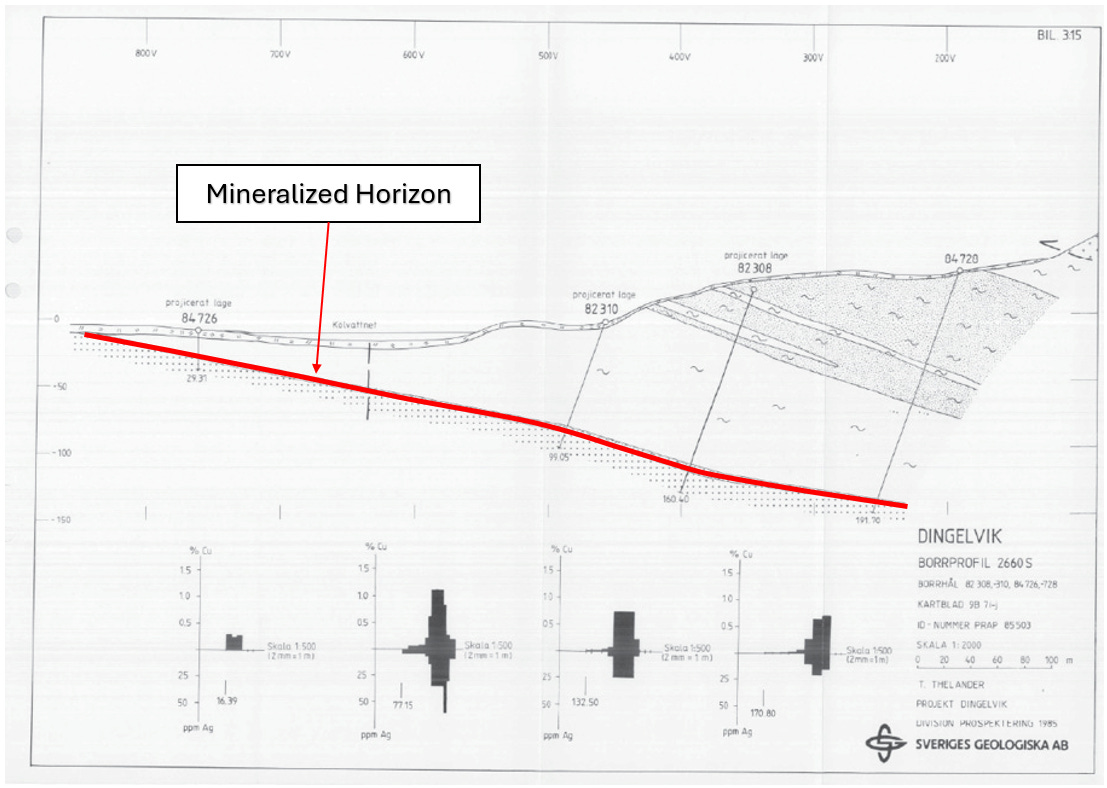An Initial Look at a New Swedish Copper Story
Today, we're going to take a brief look at Arctic Minerals' Hennes Bay project in southern Sweden.
Since publishing a JORC-compliant resource just a few days ago, there has been quite a buzz around the company, which now holds one of the largest undeveloped copper resources in Europe. Today, we're going to take a closer look at the project from a geologist's perspective.
The Arctic Minerals Story
Arctic Minerals has been around for a while, holding some interesting assets like the high-grade Bidjovagge Cu-Au project in northern Norway and an early-stage, large-scale copper play in northern Finland. While things had been rather quiet in recent years, a recent merger with the private explorer Rare Earth Energy Metals has brought the company back to life. With the addition of the Swan Lake and Hennes Bay projects to its portfolio, Arctic is positioning itself as a new, Nordic-focused copper exploration and development company.
The Hennes Bay Project
While several of the company’s projects deserve a closer look, it is the newly acquired Hennes Bay project that has recently triggered the company's re-evaluation.
So, what’s the deal with Hennes Bay? Where is it located, and what are we looking at in terms of geology? Let’s take a closer look. 👀
Interestingly, the project isn’t located in one of Sweden’s traditional mining regions, but in Dalsland — an area in the southwestern part of the country, stretching from Gothenburg to the shores of Lake Vänern.
Although there hasn’t been any recent mining activity in the region, the copper potential has long been recognized. In fact, a large-scale historic mining attempt took place in the Stora Strand area in the early 20th century, resulting in significant underground development.
Geology
Geologically speaking, the copper occurrences in the Dalsland region can be classified as part of a large-scale sedimentary-hosted copper system, associated with the roughly one-billion-year-old Dalsland formation. Historic records suggest that the copper mineralization occurs at two specific stratigraphic horizons, associated with a lithological contact between oxidized quartzite packages and the overlying, reduced shale horizons. Subsequent deformation has folded the Dalsland formation and its copper-rich layers into gentle, low-amplitude folds, generally causing the formation to dip at angles between 10 and 30 degrees.
The mineralization is dominated by chalcopyrite, averaging somewhere between 5 and 15 kg/t of copper, and — as is typical for these systems — is laterally extensive. In addition to their enormous tonnage potential and generally high grades (especially when compared to most of today’s porphyry deposits), it is this remarkable continuity that has explorers worldwide on the hunt for the last remaining sedimentary-hosted copper districts.
Exploration History
The newly published resource of around 55 Mt at 0.8% Cu and 20 g/t Ag is based on historical drilling data from a large, partly state-funded exploration campaign conducted in the region several decades ago. Notably, the resource reported by the company is based solely on the largest of the historic targets, where data confidence and drill density are the highest. While the other prospects have so far only been classified as exploration targets, if they were to be fully converted into a resource, the total tonnage could increase to around 73 Mt at similar grades.

Disclaimer: This article is for informational purposes only and should not be considered investment advice. Always conduct your own due diligence before making any investment decisions.
Now, let’s move on to the second part of the article, where I’m going to cross-check Arctic’s published tonnage numbers and discuss some other important geological details. If you enjoy this kind of in-depth coverage, consider becoming a premium or exclusive subscriber to access members-only content and features.





